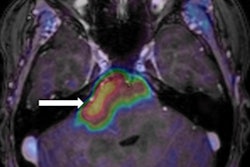Dear Molecular Imaging Insider,
There's no better time for nuclear medicine and molecular imaging than the second week in June at the Society of Nuclear Medicine and Molecular Imaging (SNMMI) annual meeting. This year's event is now underway in Denver, and AuntMinnie.com, as always, is onsite for all the latest news and groundbreaking research.
One of the more fascinating studies at this week's meeting comes from researchers at Emory University, who are reporting success in fusing fluciclovine-PET and 3D ultrasound images to better detect and biopsy suspected recurrent prostate cancer. Findings from the early-stage clinical trial show that the fusion-targeted biopsy imaging technique increased positive biopsy results and might become a useful method for detecting recurrent prostate cancer, especially in patients with prior negative biopsy.
Read about the potential of this new hybrid imaging technique in this issue's Insider Exclusive.
Also at SNMMI 2017 comes a study from Switzerland in which researchers are evaluating fluoroethyl-tyrosine (FET) PET imaging to assess brainstem glioma in adults and gauge their chances for progression-free survival. Their work shows that FET-PET has promise in terms of predicting progression-free survival, but it seems to falls short in differentiating between low-grade and high-grade brainstem gliomas.
In the meantime, see how SPECT gamma cameras featuring cadmium zinc telluride-based digital detector technology are just what the nuclear cardiologist ordered to diagnose seemingly healthy patients with cardiac symptoms and to help predict their chances for an adverse event.
In addition, one large nuclear cardiology lab network in Missouri has reduced its average radiation dose by 60% over the past eight years. The study included more than 18,000 SPECT myocardial perfusion imaging scans performed between 2009 and 2016 at four nuclear cardiology centers.
Finally, by turning to a SPECT/CT scan with technetium-99m sestamibi, clinicians can overcome inconclusive or suspicious CT or MRI results and are better able to characterize and diagnose renal cell carcinoma.
There is much more to come this week from the SNMMI meeting, so please check back in the Molecular Imaging Community to learn more about the latest news and research.




















